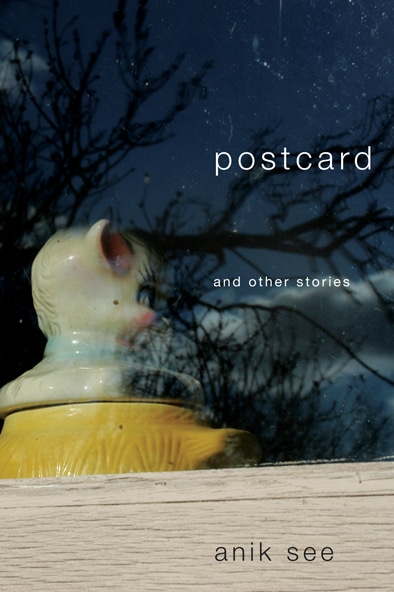Contributor Spotlight: Anik See
 Anik See’s essay “The Great Beauty” is part of the special international section “Place & Space in Canada” in Issue 74 of the Bellingham Review, which will be available mid-April 2017. Subscribe or purchase a single issue through our Submittable page here.
Anik See’s essay “The Great Beauty” is part of the special international section “Place & Space in Canada” in Issue 74 of the Bellingham Review, which will be available mid-April 2017. Subscribe or purchase a single issue through our Submittable page here.
What would you like to share with our readers about the work you contributed to the Bellingham Review?
Growing up in Canada in the 1970s, there was a lot of rhetoric about Canada being a land of resources—that without them, our economy would falter. Since then, Canada’s economy has changed a great deal, but the rhetoric still exists. When I moved to the Netherlands 11 years ago, I was (and still am) continually faced with a similarly forceful rhetoric—that Canada is a wild, empty landscape—a landscape revered by the Dutch because the Netherlands is so cultivated and crowded. Three years ago, I was writer-in-residence in northern Canada for three months, and my stay there made me realize that both the rhetoric of resources and the rhetoric of wildness were in part true, but that they were both frequently presented in a light that was disingenuous, sometimes even bordering on propaganda. They certainly did not reflect how the Canadian economy has moved away from resources, nor the impact of resource extraction on our revered wild landscapes. I wanted to provide windows into those things, and reveal that though those rhetorics seem to be separate and with opposite means to an end, they are actually entwined.
Is there a Canadian aesthetic to writing about place and space? What impact does that have on your writing?
Absolutely. If I had to sum it up, I would say that it almost always includes either vast landscapes, ice and snow, a survivalist mentality (though not necessarily involving violence) and/or multiculturalism in more urban settings.
Tell us about your writing life.
I’ve been writing since I was 10 or 11 years old. My earliest obsession was with ‘truth’, but I’ve since realized that a single truth (of a person, situation or place) often does not exist, and that portraying the entire truth of something is often impossible. As such, my writing has evolved from being deliberately and sharply one-sided to a style that’s more open and treats subjects with more vagueness in recognizing their multi-dimensionality.
Which non-writing aspect(s) of your life most influences your writing?
Landscape, landscape, landscape.
What writing advice has stayed with you?
The best teacher I ever had once told me: “the young writer’s best friend should be the garbage can.” He taught me that one should not be afraid to throw something away if it wasn’t good enough, or to start something new (or again) to get it right.
What is your favorite book(s)?
Favorite writer(s)?
There are writers I come back to again and again—W.G. Sebald for his meandering style that belies its depth; Jim Harrison for his landscapes, characters and occasional rage; Richard Ford for his baring of truths; Rachel Cushner for sheer bravery and boldness.
What are you reading right now?
I’m reading many things: The Basque History of the World, by Mark Kurlansky; In the Light of What We Know, by Zia Haider Rahman; The Underground Railroad, by Colson Whitehead; Outline, by Rachel Cusk.
What project are you working on now?
I just spent three weeks at a residency in Ireland, where I started a new project—a series of linked, fictional essays that span many centuries and deal with what it means to be human—how we treat the world in which we live and how, ultimately, we treat each other. The overall theme is broad, but the essays are more specific…
I also make radio documentaries and have a few of those in the works.
Anything else our readers might want to know about you?
Last year a friend of mine, the writer Theresa Kishkan, and I started Fish Gotta Swim Editions, a small press that publishes novellas. Our first novella is now in its second printing, which we hadn’t expected. We’re always looking for submissions, so if you have one, please check us out: fishgottaswimeditions.com
Where can our readers connect with you online?
My website is: aniksee.com
My Twitter handle is: @asrnw
ANIK SEE is a Canadian writer living in The Netherlands. She is the author of four books, and has contributed to several anthologies. Her writing, both fiction and non-fiction, has appeared in many journals and magazines, such as The Walrus, Brick, Prairie Fire, the Fiddlehead, Geist, grain, The National Post, and Toronto Life. She also produces award-winning radio documentaries for public broadcasters such as the CBC and ABC.
Featured Image: “Oil Refinery at Dawn” by Glen Euloth